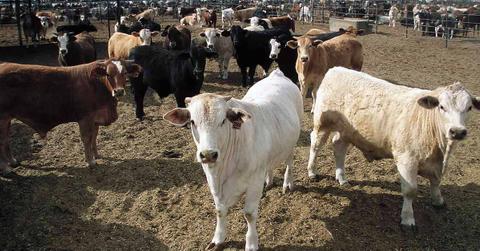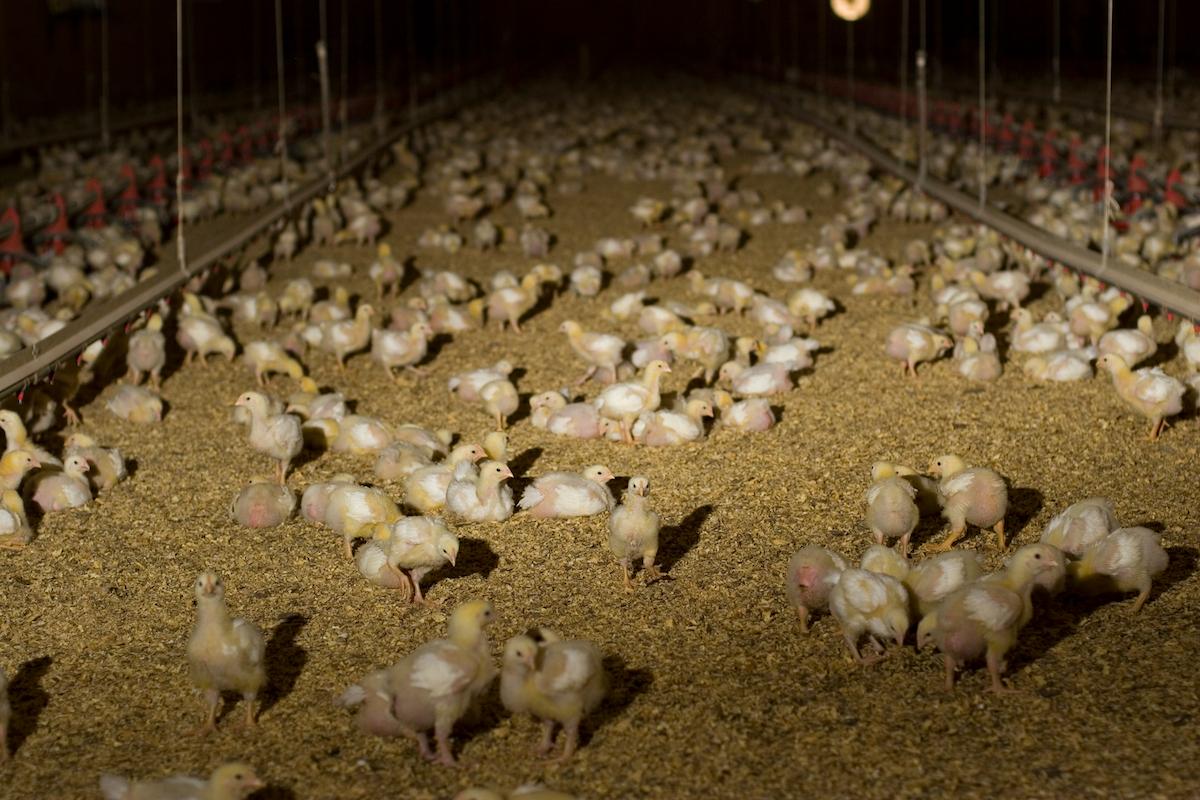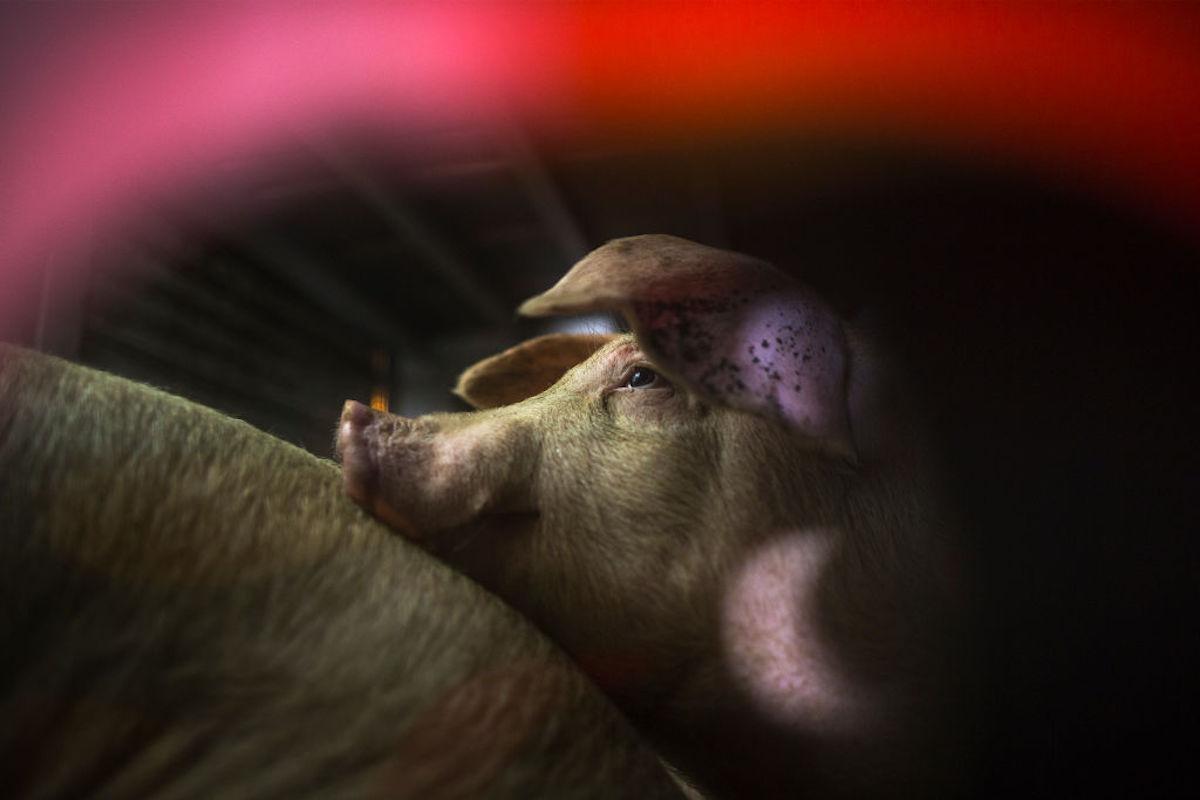Rising Temperatures Are Killing Farmed Animals — And the Solution Is Simple
The Southwestern U.S. has become too hot for farmed animals, and the heat is killing them.
Updated Nov. 3 2020, 12:55 p.m. ET

Global warming and the climate crisis have negative effects on endless facets of our society, in many ways that are difficult to imagine. And according to a new report, a little-known side effect of rising temperatures as part of climate change is that the Southwestern U.S. has become too hot for farmed animals, and the heat is killing them.
The Guardian recently shared a report on this new reality for farmers in Arizona and other parts of the American Southwest (which generally refers to Arizona, California, Nevada, New Mexico, and Utah). If you eat meat, dairy, or eggs, there’s a high likelihood that you’ve eaten animals from these states, as animal agriculture represents a third of the region’s agricultural economy.
Keep reading to find out exactly how global heating is impacting animal agriculture in the American Southwest.
Global warming is killing farmed animals in the Southwestern U.S.

In Arizona, temperatures have risen to alarming levels in recent years, with the state recently experiencing its hottest summer ever recorded. These rising temperatures — a direct result of increased greenhouse gas emissions in the air, trapping heat — are affecting the animal agriculture industry in so many ways.
Most animals being raised as livestock are kept inside factory farms or concentrated animal feeding operations (CAFOs), which are large, indoor warehouses that stuff animals to the brim as they are fattened up or exploited for their eggs or milk, awaiting slaughter. The Guardian spoke with several farmers who prefer to keep animals outside or at least give them designated time to spend outside, who explained some of the specific issues that the rising temperatures are causing.
The heat (and heat stress) has reportedly caused animals to eat and drink less, and therefore grow slower; this means the animals live longer before slaughter, and therefore consume more resources, costing the farmers more money. The heat has also contributed to lower fertility rates, which means trouble breeding more animals to raise and kill, as well as higher mortality rates, which means the animals die before they make it to the slaughterhouse, and their bodies cannot be consumed safely (or legally, in most instances).
Farmers are working around rising temperatures.
The farmers profiled by The Guardian have come up with several strategies to mitigate the effects of global warming on their farms. One cattle farmer has taken to breeding specific types of cows who better tolerate heat and drought. Other farmers simply bring their animals inside, depriving them of outdoor access (the reality for 99 percent of farmed animals in the U.S.).
As these farmed animals spend more time inside, that means more electricity is being used to keep the barns or factory farms lit and air conditioned. And unfortunately, one farmer told The Guardian that the heat still seems to be killing animals even when they’re brought into barns.
Ironically, animal agriculture is the root cause of this vicious cycle.

The irony of all this is that animal agriculture contributes significantly to greenhouse gas emissions (18 percent globally, the UN estimates), which traps heat in the air, which causes temperatures to rise, which causes livestock to suffer, which causes farmers to use more resources, which emit more greenhouse gases, and on and on, causing a vicious cycle.
Most of the farmers caught in this cycle are probably very worried about losing money due to all this — and fortunately, there is a solution that could help them simultaneously increase profits, lessen animal suffering, and reduce global heating.
The solution to this problem is clear.
Farmers in this situation can transition away from animal agriculture and to growing plants. If their land is arable, they can start growing and selling crops that will thrive on their land. If not, they can look into transitioning to growing crops indoors using hydroponics technology. There are even organizations that help animal farmers with this task, such as Rancher Advocacy Program and Mercy for Animals’ Transfarmation Project.
Growing plants is much more sustainable — not just for the planet, but also for farmers, who can much more easily manage plants and rely on their health than they can with live animals. Hopefully more and more farmers will start realizing the endless benefits of these options.